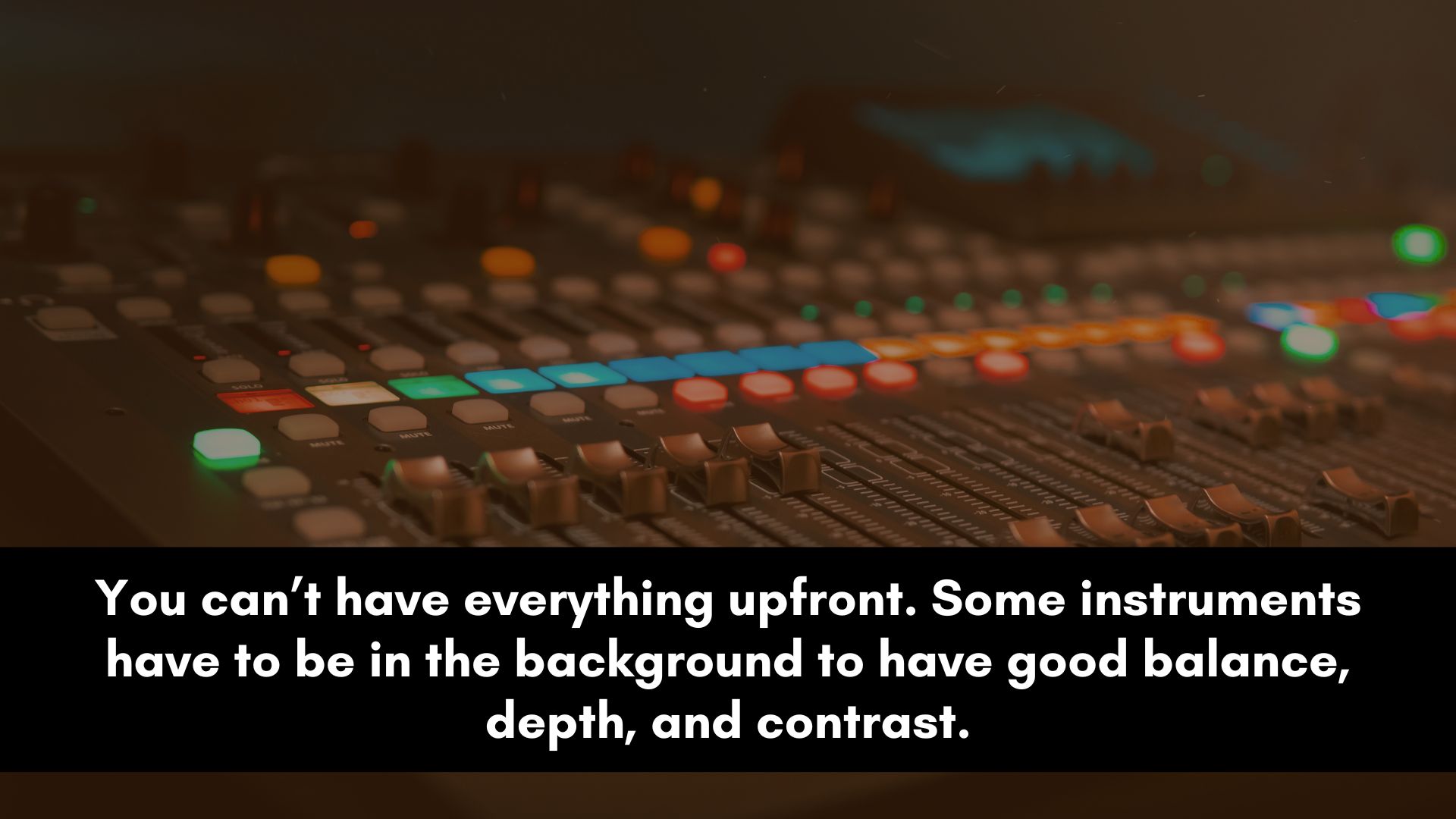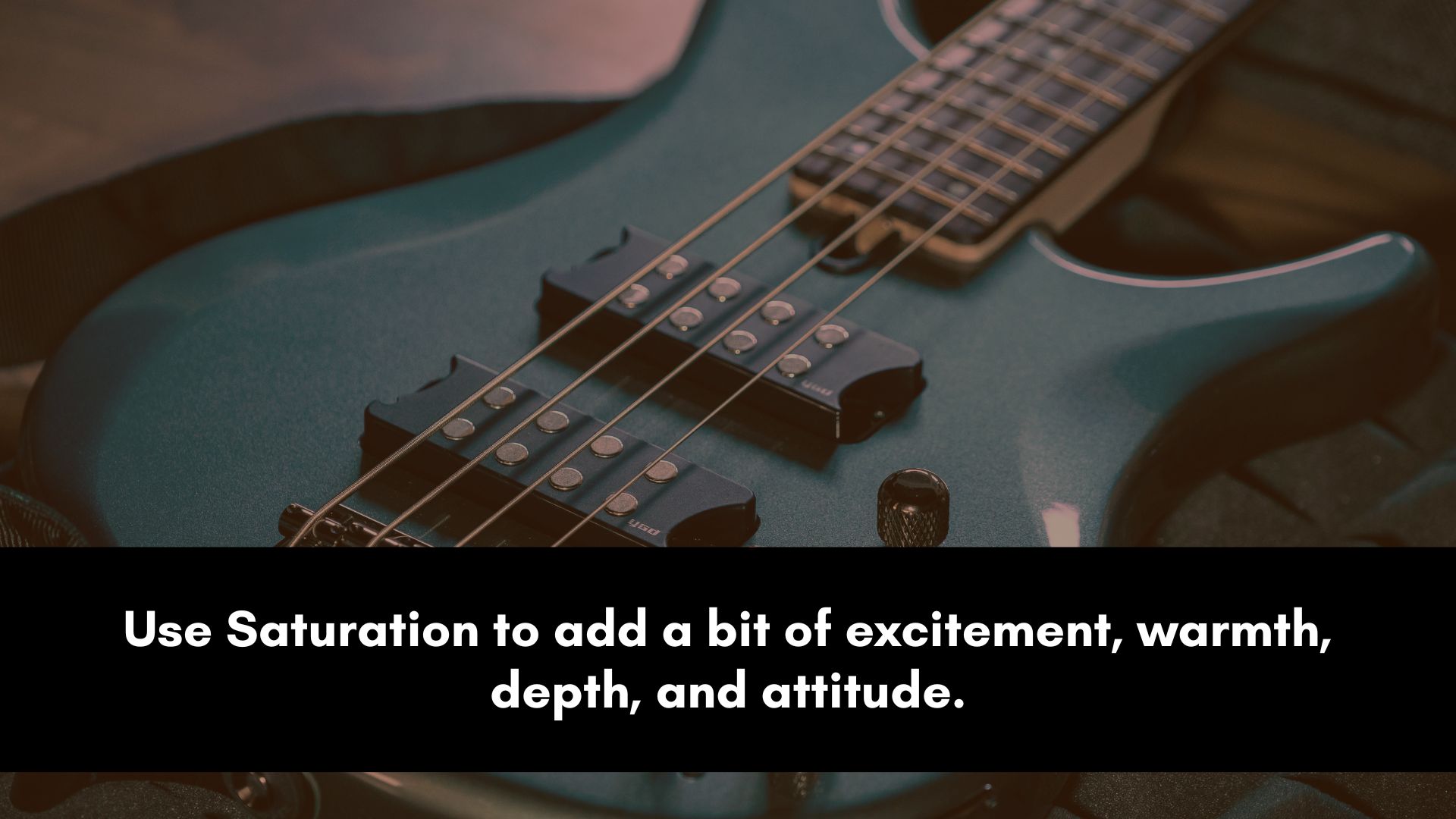Mixing bass guitar is an important part of audio engineering, as it provides the foundation of the song.
A well-mixed bass guitar can enhance the overall sound and impact of a track, but it can be a challenging task for many producers and engineers.
In this blog post, we will discuss some tips and techniques for mixing bass guitar, including EQ, compression, level balancing, saturation, and more.
How to Mix Bass Guitar
Give yourself the gift of no longer dreading your mixing or getting overwhelmed when it's time to process the bass.
Finally, master the art of producing a well-balanced low end every time, no matter the genre.
- Get it Right From the Source
The initial step in mixing bass guitar is to ensure a high-quality recording.
If using microphones, the bass guitar should be recorded cleanly with minimal background noise.
It is essential to experiment with different microphone placements and types to achieve the desired sound.
A direct recording is generally preferred over a microphone recording due to its consistency and ease of processing.
When using samples, ensure they complement the other instrumentation, particularly the kick drum.
Avoid selecting a sample that clashes with the kick, as this will compromise the mix’s overall quality.
The same principle applies when designing bass guitar sounds using synthesizers or VST instruments.
The objective is to consistently obtain the correct sound directly from the source.
Avoid taking shortcuts. - Level Balancing

The level of the bass guitar in the mix is crucial.
It needs to be loud enough to be audible but not so loud that it overpowers the other low-end instruments.
Begin by determining which instrument should dominate the low end, between the kick and bass.
Employ the same process if you have other low-end sounds such as 808, floor tom, or cajon.
It is not possible for all instruments to be at the forefront; some instruments must be in the background to achieve good balance, depth, and contrast.
It should be easy for the listener to discern which sound is driving the low end; there should be no ambiguity.
The levels of all the instruments can then be adjusted to create a well-balanced low end.
Referencing songs in the same genre may reduce guesswork, especially if one is not familiar with that particular style of music. - Equalizing the Bass Guitar
Equalization is a critical tool for shaping the sound of the bass guitar.
Generally, one should begin by cutting any unwanted frequencies, then utilize a tonal EQ to enhance certain frequencies to optimize the bass’s presence in the mix.
The initial step entails attenuating any undesirable frequencies that may be muddying the mix or clashing with other instruments.
Common problem areas for bass guitars may include excessive low-end rumble, mid-range boominess, or high-frequency harshness.
Once the unwanted frequencies have been addressed, tonal equalization can be applied to enhance specific frequencies and optimize the bass guitar’s presence in the mix.
This may involve boosting frequencies that accentuate the fundamental notes of the bass, add warmth and body, or improve articulation and definition.
You can sculpt the sound of the bass guitar to fit seamlessly within the mix by carefully balancing these two processes.
This ensures that it provides a solid foundation while allowing other instruments to occupy their designated sonic spaces.
Need a quick rundown on bass EQ? Check out this guide, “How to EQ Bass Guitar“—it even has a cheat sheet. - Compress to Impress

Compression is a critical aspect of mixing bass guitar. It can even out the volume levels of the bass guitar.
This ensures that the quieter notes are audible and the louder notes don’t overpower the mix.
Compression can be used creatively to shape the attack and release of the bass guitar notes.
This can help create contrast and definition, making the bass guitar more articulate and easier to hear in a dense mix.
Attack and release parameters can be used to deliberately push the bass guitar behind other low-end instruments, such as kick drums and synths.
This technique can create a sense of space and separation in the mix, allowing each instrument to occupy its own frequency range without clashing.
Conversely, subtle compression can be used to bring the bass guitar forward in the mix, making it more prominent and impactful.
This can be particularly useful when the bass guitar is playing a melodic or solo role.
The key to using compression effectively is to find the right balance for the specific mix.
Refer to my previous post, “Bass Compression,” for complete guidance and a list of settings you can try for different types of bass sounds. - Adding Harmonic Content

Saturation also plays a key role in ensuring that the bass guitar is positioned optimally within the mix.
Currently, many recordings bypass analog gear, potentially resulting in an overly digital and clean sound, which can be unappealing.
To make things more exciting, warm, deep, and add some attitude, we use saturation plugins.
This technique is particularly valuable for addressing a thin bass, as saturation can enhance its fullness and warmth without introducing muddiness.
Saturation can improve the bass’s audibility on small speakers (laptops, smartphones, Bluetooth speakers, AirPods, etc.).
For further information on this topic, please refer to my previous article, “How To Mix Bass For Small Speakers.” - Stereo Imaging
Stereo imaging is an optional yet powerful tool for bass instruments.
A multiband stereo imaging tool can be used to make the upper frequencies wider while keeping everything below 150 Hz mono.
This will allow the bass to sound more expansive and dynamic while making sure that the bass translates well on different sound devices.
It is important to note that excessive stereo widening can make the bass guitar sound unnatural and cause phase issues.
Widening the bass in the upper frequencies can also create space and avoid clutter in the center of the stereo image.
You can learn how Jaycen Joshua widens his bass in the video below.
Mixing Kick & Bass
I’ve written a dedicated post about this topic.
Check out “How To Mix Kick and Bass” for the complete guide.
The tutorial covers different scenarios to help you get the perfect low end you hear on your favorite songs, not to mention the mistakes you need to avoid.
So go check it out to create a well-balanced and powerful bass guitar sound that enhances the overall impact of your music.
Best Distortion Plugins for Bass
Choosing the right distortion plugin is a crucial step in making sure that you get the best sound when mixing a bass guitar.
Not all plugins are created equal. Some are designed to add warmth, while others are great for making things cut through.
Check out my post called “My 8 Favorite Bass Distortion Plugins” to learn more.
FAQ
It would be a crime to wrap up this guide without answering some frequently asked questions about how to mix bass guitar.
If you have any further questions, please leave them in the comments section, and I will respond as soon as possible.
Should Bass Guitar Be Panned in the Mix?
The bass guitar is typically centered in the mix, as it provides the foundation and anchor for the low frequencies of the song.
Panning the bass usually causes the low frequencies to become weak or unbalanced.
One thing to keep in mind is that frequency waves are much longer as they get lower, sometimes as long as the room, making it harder to determine the direction of the sound.
Panning the bass can also make it hard for it to translate well when played on different sound systems.
You might be able to hear it in your studio, but it will often fall flat when played on other devices.
If you’re mixing for vinyl, then it’s a must to keep it mono because making it stereo will cause the needle to skip.
Even if you’re mixing multiple bass sounds, there’s no need to pan them left and right; all you need to do is make one wide and keep the other narrow.
This should create separation and avoid any masking or frequency overlap.
Should I Mix Bass in Mono or Stereo?
In general, it is best to mix the bass guitar in mono.
This is because the bass guitar is a low-frequency instrument, and low-frequency information tends to be mono in most playback systems.
Mixing the bass in stereo can cause issues with phase cancellation and may result in a weaker or less defined low end.
However, there may be certain situations where using stereo processing on the bass can be beneficial.
For example, using a stereo widening effect on the higher frequency harmonics of the bass guitar can help to create a sense of space and depth in the mix.
It is important to note that any stereo processing on the bass should be used sparingly and with care, as it can easily cause phase issues or an unbalanced low end.
It is also a good idea to check the mix in mono to ensure that the low end is still balanced and solid.
It’s important to mention that there is nothing wrong with a stereo bass as long as it translates perfectly when played in different playback systems.
Why is Bass So Hard to Mix?
Bass can be difficult to mix because it occupies a large part of the low-frequency spectrum, which can easily become muddy or overpowering if not properly balanced.
The bass and kick drum are typically the foundation of the rhythm section, and any imbalance or inconsistency in their levels can affect the overall feel and groove of the song.
The biggest issue that makes it hard to mix bass is when you’re working with sounds that don’t compliment each other.
This is why it’s crucial to choose samples or record low-end instruments that work well together.
Apply mixing techniques to enhance the two instruments instead of relying on mixing tools to fix poor sound design or recording issues.
Here are some specific reasons why bass can be challenging to mix:
Conflicting Frequencies: The low frequencies of the bass guitar can often conflict with other instruments in the mix, such as the kick, 808, floor tom, timbale, etc., which also occupy the low-frequency range.
These conflicts can cause the mix to become muddy or unclear, making it difficult to hear individual instruments.
Inconsistent Levels: Low-end instrument parts can have varying levels of intensity throughout a song, making it difficult to maintain a consistent balance between them and the other instruments in the mix.
This inconsistency can cause the mix to sound unbalanced or lack cohesion.
Listening Environment: Many studios and listening environments do not have the proper acoustics to accurately represent the low frequencies of a mix.
This can make it difficult to properly hear and balance the bass in the mix.
Playback Systems: Many consumer playback systems, such as headphones or small speakers, do not accurately reproduce the low frequencies of a mix.
That usually makes it difficult to judge the balance and impact of the bass in a mix on these systems.
In order to properly mix bass, it is important to have a well-tuned listening environment and accurate monitoring systems.
Proper EQ and compression techniques can help to balance the bass with the rest of the mix while still maintaining its impact and power.
With experience and careful attention to detail, mixing bass can become less challenging and more intuitive.


